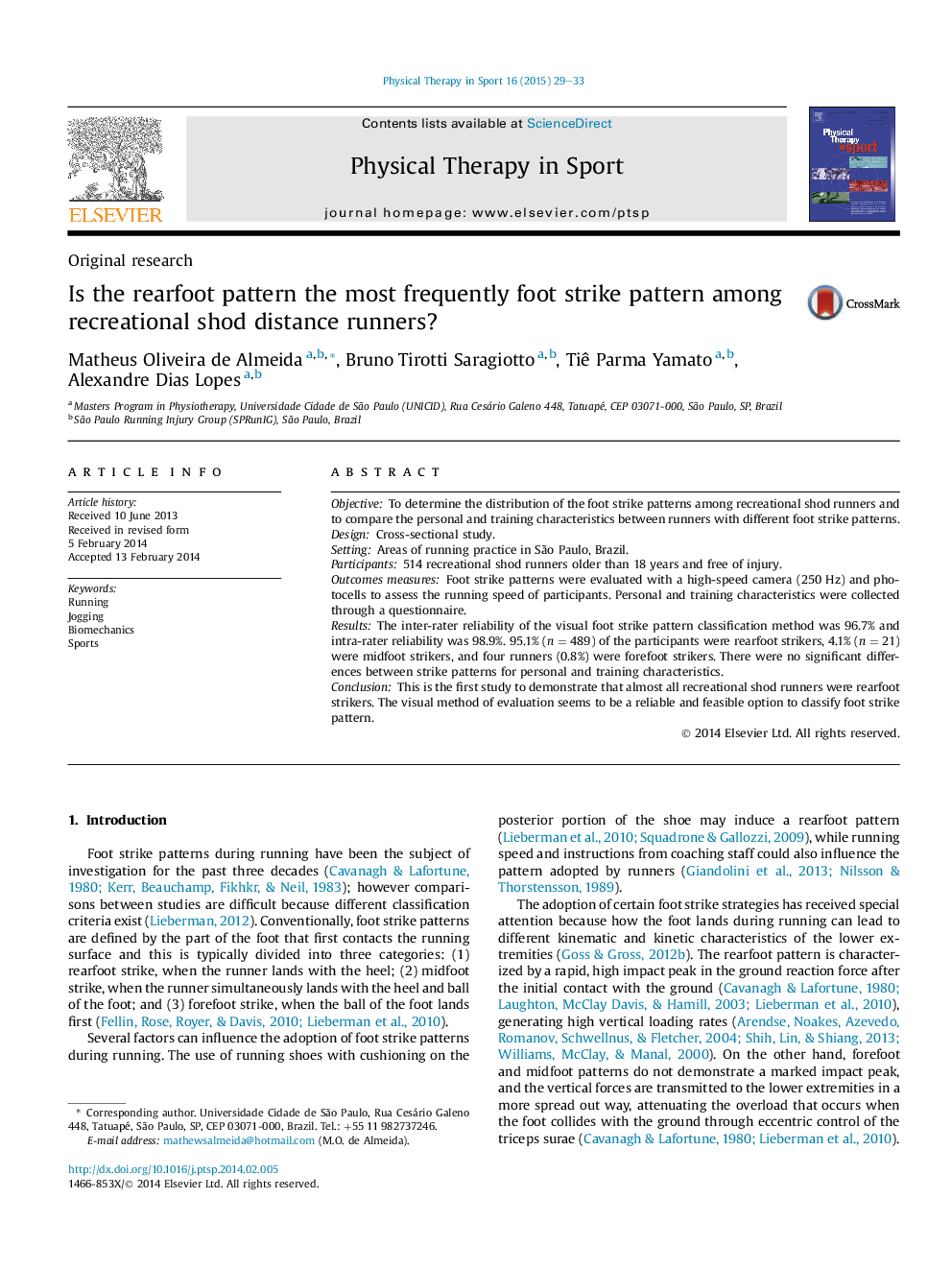| Article ID | Journal | Published Year | Pages | File Type |
|---|---|---|---|---|
| 2705815 | Physical Therapy in Sport | 2015 | 5 Pages |
ObjectiveTo determine the distribution of the foot strike patterns among recreational shod runners and to compare the personal and training characteristics between runners with different foot strike patterns.DesignCross-sectional study.SettingAreas of running practice in São Paulo, Brazil.Participants514 recreational shod runners older than 18 years and free of injury.Outcomes measuresFoot strike patterns were evaluated with a high-speed camera (250 Hz) and photocells to assess the running speed of participants. Personal and training characteristics were collected through a questionnaire.ResultsThe inter-rater reliability of the visual foot strike pattern classification method was 96.7% and intra-rater reliability was 98.9%. 95.1% (n = 489) of the participants were rearfoot strikers, 4.1% (n = 21) were midfoot strikers, and four runners (0.8%) were forefoot strikers. There were no significant differences between strike patterns for personal and training characteristics.ConclusionThis is the first study to demonstrate that almost all recreational shod runners were rearfoot strikers. The visual method of evaluation seems to be a reliable and feasible option to classify foot strike pattern.
